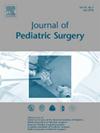儿童机器人辅助腹腔镜肾盂成形术:超过15年的经验。
IF 2.4
2区 医学
Q1 PEDIATRICS
引用次数: 0
摘要
背景:机器人辅助腹腔镜肾盂成形术(RALP)已广泛应用于儿科泌尿外科,因为RALP为腹腔镜肾盂成形术提供了额外的优势,包括更易于管理的学习曲线。我们的目标是通过我们提出的手术时间、并发症发生率和手术成功率三方面来描述儿科RALP的成熟和掌握。方法:我们回顾性分析了2007年至2022年间接受RALP的148例患者。主要结局包括手术时间、Clavien-Dindo分级(CDG) III级并发症和手术成功率。根据手术时间的累积和(CUSUM)分析,回顾性地将患者分为三个队列(学习阶段,能力阶段和掌握阶段)。结果:根据CUSUM分析,病例13和病例41分为三个学习阶段。手术时间由学习期的平均261.33±42.52 min显著缩短至掌握期的平均140.61±25.87 min。(p)结论:RALP的成功实施和手术掌握的实现是多方面、多阶段的。我们的数据表明,学习是在前12个案例中建立起来的,而掌握和最大的结果是在41个案例中实现的。更具体地说,手术时间、并发症发生率和成功率在每个学习阶段都变得越来越优化。我们的工作可以用来建立临床目标,设计培训课程,并告知患者咨询。证据等级:三级。本文章由计算机程序翻译,如有差异,请以英文原文为准。
Pediatric Robotic-assisted Laparoscopic Pyeloplasty: Defining Mastery Over a 15 Year Experience
Background
Robotic-assisted laparoscopic pyeloplasty (RALP) has been widely utilized within pediatric urology as RALP provides additional advantages to laparoscopic pyeloplasty including a more manageable learning curve. We aim to describe the maturation and mastery of pediatric RALP through our proposed trifecta of operative time, complication rates, and surgical success rates.
Methods
We retrospectively reviewed 148 patients who underwent RALP between 2007 and 2022. Primary outcomes included operative time, Clavien-Dindo Grade (CDG) III complications, and surgical success rate. Patients were retrospectively divided into three cohorts (learning phase, competency phase, and mastery phase) based upon a cumulative sum (CUSUM) analysis of operative time.
Results
Three learning phases were differentiated at case 13 and case 41 per CUSUM analysis. Operative time significantly decreased from a mean of 261.33 ± 42.52 min in the learning phase to 140.61 ± 25.87 min in the mastery phase (p < 0.001). CDG III complications were significantly different between phases as well, decreasing from 27.3 % to 5.75 % (p = 0.045). Success rates were significantly different and increased from 83 % in the learning phase to 98 % in the mastery phase (p = 0.015).
Conclusion
Successful RALP implementation, and the achievement of surgical mastery, is multifaceted and multi-phasic. Our data suggests that learning is established within the first 12 cases and mastery and maximal outcomes are achieved after 41 cases. More specifically, operative time, complication rates, and success rates become increasingly optimized at each phase of learning. Our work can be used to establish clinical goals, design training curriculums, and inform patient counseling.
Level of Evidence
Level III.
求助全文
通过发布文献求助,成功后即可免费获取论文全文。
去求助
来源期刊
CiteScore
1.10
自引率
12.50%
发文量
569
审稿时长
38 days
期刊介绍:
The journal presents original contributions as well as a complete international abstracts section and other special departments to provide the most current source of information and references in pediatric surgery. The journal is based on the need to improve the surgical care of infants and children, not only through advances in physiology, pathology and surgical techniques, but also by attention to the unique emotional and physical needs of the young patient.

 求助内容:
求助内容: 应助结果提醒方式:
应助结果提醒方式:


